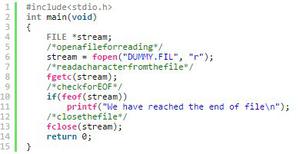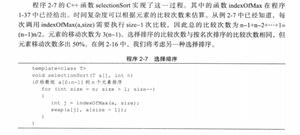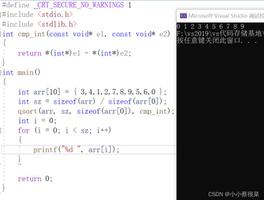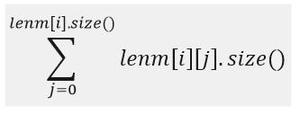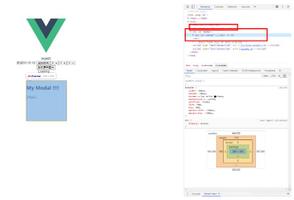C语言中sizeof函数的基本使用总结
前言
C语言中的sizeof是一个很有意思的关键字,经常有人用不对,搞不清不是什么。我以前也有用错的时候,现在写一写,也算是提醒一下自己吧。
sizeof是什么
sizeof是C语言的一种单目操作符,如C语言的其他操作符++、--等,sizeof操作符以字节形式给出了其操作数的存储大小。操作数可以是一个表达式或括在括号内的类型名。这个操作数不好理解对吧?后面慢慢看就明白了。sizeof的返回值是size_t,在64位机器下,被定义为long unsigned int。
sizeof函数的结果:
1.变量:变量所占的字节数。
int i = 0;
printf("%d\n", sizeof(i)); //4
2.数组:数组所占的字节数。
int arr_int1[] = {1,2,3,4,5};
int arr_int2[10] = {1,2,3,4,5};
printf("size_arr1=%d\n",sizeof(arr_int1)); //5*4=20
printf("size_arr2=%d\n",sizeof(arr_int2)); //10*4=40
3.字符串:其实就是加了'\0'的字符数组。结果为字符串字符长度+1。
char str[] = "str";
printf("size_str=%d\n",sizeof(str)); //3+1=4
4.指针:固定长度:4(32位地址环境)。
特殊说明:数组作为函数的入口参数时,在函数中对数组sizeof,获得的结果固定为4:因为传入的参数是一个指针。
int Get_Size(int arr[]) {
return sizeof(arr);
}
int main() {
int arr_int[10] = {1,2,3,4,5};
printf("size_fun_arr=%d\n",Get_Size(arr_int)); //4
}
5.结构体
1.只含变量的结构体:
结果是最宽变量所占字节数的整数倍:[4 1 x x x ]
typedef struct test {
int i;
char ch;
}test_t;
printf("size_test=%d\n", sizeof(test_t)); //8
几个宽度较小的变量可以填充在一个宽度范围内:[4 2 1 1]
typedef struct test {
int i;
short s;
char ch1;
char ch2;
}test_t;
printf("size_test=%d\n", sizeof(test_t)); //8
地址对齐:结构体成员的偏移量必须是其自身宽度的整数倍:[4 1 x 2 1 x x x]
typedef struct test {
int i;
char ch1;
short s;
char ch2;
}test_t;
printf("size_test=%d\n", sizeof(test_t)); //12
2.含数组的结构体:包含整个数组的宽度。数组宽度上文已详述。[4*10 2 1 1]
typedef struct test {
int i[10];
short s;
char ch1;
char ch2;
}test_t;
printf("size_test=%d\n", sizeof(test_t)); //44
3.嵌套结构体的结构体
包含整个内部结构体的宽度(即整个展开的内部结构体):[4 4 4]
typedef struct son {
int name;
int birthday;
}son_t;
typedef struct father {
son_t s1;
int wife;
}father_t;
printf("size_struct=%d\n",sizeof(father_t)); //12
地址对齐:被展开的内部结构体的 首个成员的偏移量 ,必须是被展开的 内部结构体中最宽变量 所占字节的整数倍:[2 x x 2 x x 4 4 4]
typedef struct son {
short age;
int name;
int birthday;
}son_t;
typedef struct father {
short age;
son_t s1;
int wife;
}father_t;
printf("size_struct=%d\n",sizeof(father_t)); //20
总结
以上是 C语言中sizeof函数的基本使用总结 的全部内容, 来源链接: utcz.com/z/329115.html

